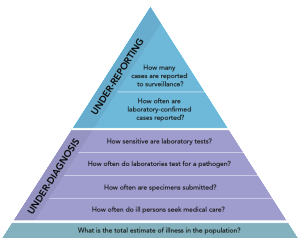For years it was 1-in-4.
One out of every four people would get sick from the food and water they consumed every year in the U.S., culminating in the 76 million sick people per year.
 The Canadians and Australians eventually did their own estimates and came up with 1-in-3.
The Canadians and Australians eventually did their own estimates and came up with 1-in-3.
Then the Americans revised their number to 1-in-6, or 48 million people barfing per year.
Now the Canadians have revised their number to 1-in-8.
This doesn’t mean food is safer or worse, just that better estimates make more accurate estimations – and these are still vast estimations.
The Public Health Agency of Canada estimates that each year roughly one-in-eight Canadians (or four million people) get sick due to domestically acquired food-borne diseases. This estimate provides the most accurate picture yet of which foodborne bacteria, viruses, and parasites are causing the most illnesses in Canada, as well as estimating the number of foodborne illnesses without a known cause.
In general, to be captured in a Canadian surveillance system, a sick individual must: seek care; have a sample (stool, urine or blood) requested; and submit a sample for testing. In addition, the sample must be tested with a test capable of identifying the causative agent; and finally the positive test result must be reported to the surveillance system. Surveillance systems only capture a small portion of total illnesses given all these necessary steps (i.e. there is under-diagnosis and under-reporting taking place).
